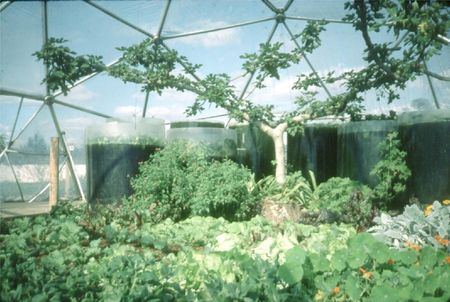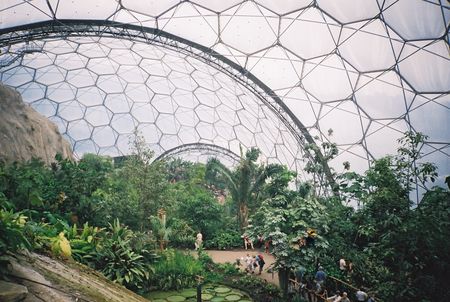Fluoropolymers: Difference between revisions
No edit summary |
mNo edit summary |
||
| Line 4: | Line 4: | ||
==About== | ==About== | ||
High-performance plastic materials such as [https://en.wikipedia.org/wiki/Polytetrafluoroethylene PTFE] ("Teflon") | High-performance plastic materials such as [https://en.wikipedia.org/wiki/Polytetrafluoroethylene PTFE] ("Teflon") ETFE (Tefzel"). Very interesting properties such as UV resistance, resistance to corrosionfrom most substances and better high temperature performance. Fluoropolymer foil is useful for things like [[greenhouse]] covering and for [[Aluminum Extraction From Clays]]. The UV resistance of these materials results in long life, with up to 30 years reported with minimal degradation. | ||
Also, UV transmission leads to more "natural" light spectrum inside the greenhouse, suppressing microbes that may otherwise survive if UV light is blocked off. Fluoropolymers are slowly catching on as greenhouse covering but are still much more expensive than current alternatives such as polyethylene and [[polycarbonate]]. Drawbacks include susceptibility to puncture holes and movement/wind, which is why fluoroplastic foil is often inflated as cushions (see images: "Pillow Dome" and "Eden Project"). Thicker membranes are possible but much more expensive. | Also, UV transmission leads to more "natural" light spectrum inside the greenhouse, suppressing microbes that may otherwise survive if UV light is blocked off. Fluoropolymers are slowly catching on as greenhouse covering but are still much more expensive than current alternatives such as polyethylene and [[polycarbonate]]. Drawbacks include susceptibility to puncture holes and movement/wind, which is why fluoroplastic foil is often inflated as cushions (see images: "Pillow Dome" and "Eden Project"). Thicker membranes are possible but much more expensive. | ||
Revision as of 14:35, 11 May 2016


About
High-performance plastic materials such as PTFE ("Teflon") ETFE (Tefzel"). Very interesting properties such as UV resistance, resistance to corrosionfrom most substances and better high temperature performance. Fluoropolymer foil is useful for things like greenhouse covering and for Aluminum Extraction From Clays. The UV resistance of these materials results in long life, with up to 30 years reported with minimal degradation.
Also, UV transmission leads to more "natural" light spectrum inside the greenhouse, suppressing microbes that may otherwise survive if UV light is blocked off. Fluoropolymers are slowly catching on as greenhouse covering but are still much more expensive than current alternatives such as polyethylene and polycarbonate. Drawbacks include susceptibility to puncture holes and movement/wind, which is why fluoroplastic foil is often inflated as cushions (see images: "Pillow Dome" and "Eden Project"). Thicker membranes are possible but much more expensive.
Uses
- greenhouse covering (as foil)